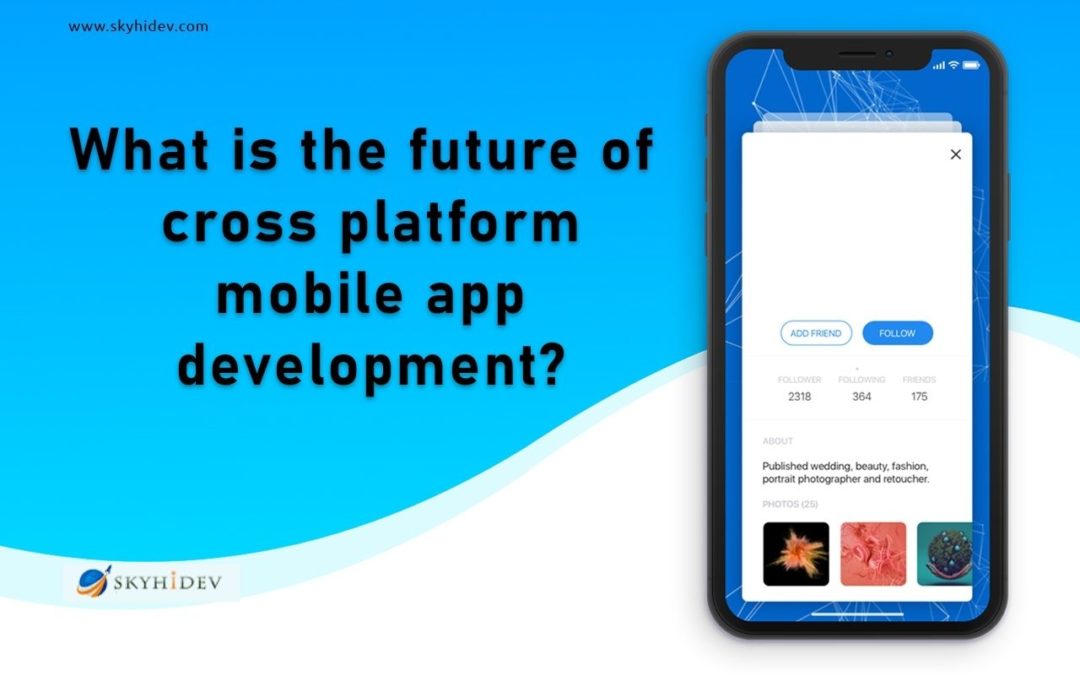The analyses show that users disburse 4.2 hours per day (on average) in apps. Also, the prognosis for the overall mobile app market is for continued growth, earning a staggering $935 billion in income in 2023. This shows that apps are predicted to keep growing in the years forward, and it’s up for apps businesses to stay on the lid of their game.
With the growing request for mobile apps, businesses seek to additionally engage users by delivering them the most useful mobile app experience potential. More useful UX leads to the highest revenues, permitting companies to stay forward of their competitors. Thus, leveraging the cost-effective yet one of the most reasonable mobile app development processes (i.e., cross-platform development).
What Is cross-platform mobile app development?
Cross-platform development is the procedure of designing and producing mobile applications that can run perfectly on considerable platforms (mainly iOS and Android). It is designed with a single codebase, so individuals often say ‘developed in one, employed for all.’
In other words, cross-platform development is the procedure of making an application that can work across numerous operating systems (like iOS and Android). React Native (by Facebook) and Flutter (by Google) are the two multiple well-known cross-platform mobile app development frameworks companies widely utilize to make hybrid apps.
Top 5 cross-platform mobile app development Frameworks to Influence
React Native
Established by Facebook in 2015, React Native is thought one of the most promising open-source, cross-platform frameworks. In accumulation, the idea of ‘learn once and write anywhere’ drives this cross-platform framework distinctive from others.
Flutter is a multi-platform framework for creating UIs, presented by Google. It is utilized to develop mobile apps with one codebase that operates continuously on Android and iOS platforms. Even though it has only lived in reality for a few years, Flutter is already one of the most accustomed and loved frameworks. It is a severe rival of React Native.
PhoneGap is a complimentary and open-source, cross-platform software development kit (SDK) that lets web developers construct cross-platform apps for mobile gadgets using standards-based Web APIs, HTML5, CSS3, etc. Employing PhoneGap, developers can access native device roles such as the camera or accelerometer without utilizing platform-specific APIs.
Ionic is a free, open-source, and cross-platform framework that aims to create native mobile (Android and iOS) and web apps with the identical HTML, CSS, and JavaScript codebase. The Ionic team likewise provides UI elements for building iOS and Android apps in HTML, CSS, and JavaScript through the Ionic Components library and the pieces are made with AngularJS directives.
Xamarin is a medium to build cross-platform apps. Its tools, languages, and frameworks are employed to develop mobile apps operating C# codebase to assemble them into native code for the detailed device. It utilizes C# as its introductory programming language. There are also additional elements provided by this tool; for instance, you can also use Xamarin’s UI elements to make native UIs.
Why Do Businesses Need cross-platform mobile app development?
With the current boom in mobile devices, it is no surprise that companies are looking to apps to deliver details about their products. However, designing an app for just one platform can be pricey and time-intensive. Thus, rather than subsidizing numerous hours assembling individual versions of an app, enterprises can opt for cross-platform development.
Creating a cross-platform app will authorize enterprises to maximize their audience by targeting iOS and Android users. There are several uses of opting for a cross-platform strategy to app development:
Cross-platform frameworks are the legend to consistency. Of course, Android and iOS have separate UI, but when it reaches down to UX, feeling matters more than how well planned your app peeks on one precise platform versus another. If you enjoy an app that will function equally amazing no matter which device it’s being employed in, go for a cross-platform technique.
Quick Deployment
The most useful thing about cross-platform frameworks is — that they solely require one codebase to construct an app that performs perfectly well on iOS and Android. And this feature saves time, cost, and struggle, resulting in quicker deployment. And we all know how vital “faster time-to-market” is for companies (especially startups and small firms).
Cost-Effective
Since cross-platform apps are founded on a single codebase, they are faster to develop and take minor effort for grade testing. Moreover, companies don’t require to hire two different developers for app development. Rather, they can engage only one developer if it is cross-platform app development.
Enhanced Market Reach
If you (as a company) opt for cross-platform app development, you automatically raise your market ground. How? Users are on Android and iOS media, and cross-platform frameworks permit you to develop apps for both operating with just one codebase. Hence, it enhances your market spread as it doesn’t let you skip out on either platform.
Concluding Point
What the fate holds for cross-platform mobile app development is difficult to say. Nevertheless, cross-platform development is worth regarding as it eases the method of mobile app development. The most prominent benefit of opting for cross-platform technology is the more rapid development with the least cost due to its single codebase use, which every company is hankering. Have any introspections about the future of cross-platform mobile app development? if yes, then reach out to our office. Mobile app developers in Toronto at Skyhidev will assist you.
This content was originally published here.


